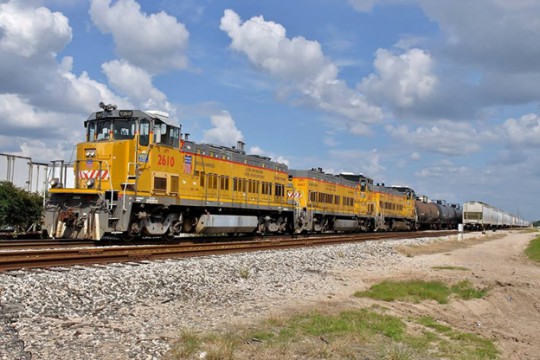UPDATE: Congress advances bill to delay Railroad PTC Mandate Will January 1, 2016 be the day the trains stop? As America’s railroads and Congress fail to agree on extending the December 31 deadline for implementing Positive Train Control systems, that threat inches closer to reality. The railroads have threatened to essentially shut down all service…
Summer Doldrums Allow a Chance to Catch up on GHS
One of the things that Labelmaster does to stay ahead of regulatory requirements for our customers is to monitor the United States Federal Register each day. If you don’t know what that is, it can be briefly described as the “book”—it’s an electronic publication, these days; that the federal government uses to give notice of…
The Sky is NOT The Limit When Shipping DG
It’s been a busy summer for our A.I.R. ShipperTM authoring team. Rolling in the large number of changes developed by ICAO, the UN and the IAEA was a challenge made more difficult with very late changes for lithium metal batteries. In case you hadn’t heard, these will be banned aboard passenger aircraft per the ICAO Technical…
USDOT/PHMSA Releases NPRM on Special Permit and Authority Approval Procedures for Fireworks Policies
In the September 24th 2014 edition of the US Federal Register, the United States Department of Transportation’s (USDOT) Pipeline & Hazardous Materials Safety Administration (PHMSA) published two clarifications of their fireworks policies under Docket #’s PHMSA-2013-0205; Notice No. 14-4 and 14-5 in which the agency sets forth acceptable criteria for defining for classification purposes both…
US Federal Railroad Administration Issues Proposed Rulemaking to Codify Emergency Order 28 of August 2013
At approximately 1:15 AM EST on July 6th, 2013, a unit freight train of the cross-border operating Montreal, Maine, & Atlantic Railroad (MM&A) loaded with crude oil from the Bakken Shale Formations in North Dakota in the western United States suffered a failure of its automatic and manual braking systems while left unattended and presumably…
U.S. DOT Announces Comprehensive Proposed Rulemaking for the Safe Transportation of Crude Oil, Flammable Materials
Releases New Data on Bakken Crude Oil to Support Increased safety Measures DGAC took part in a press conference held at 10:00 AM this morning by Transportation Secretary Anthony R. Foxx. Secretary Foxx was accompanied by FRA Administrator Joseph C. Szabo, and PHMSA Administrator Cynthia L. Quarterman. The Secretary announced that DOT is issuing a…
2013 Year-end Compliance Highlights (Part 3 of 3)
In Part 1, we highlighted the OSHA HazCom 2012/GHS Training Deadline and in Part 2, we highlighted the PHMSA DOT Final Rule, and in the third part in our Year-end Compliance series, we discuss the Hazardous Materials Marking requirement change. With regards to hazardous material shipments in non-bulk quantity, shippers must mark their hazmat packages…
Hazmat Regulations: Choose the Best Source to Stay Current
In order to legally ship hazardous materials in the United States, you must have reliable access to the most current and correct transportation regulations. Although your first inclination may be to turn to the federal government, understand that the government may not be most timely option for supplying the updated regulatory information.
Reminder: Upcoming Transitional Date for Basic Shipping Description Sequence
On December 29, 2006, the Pipeline and Hazardous Materials Safety Administration (PHMSA) published a final rule in the Federal Register harmonizing certain aspects of the U.S. Hazardous Materials Regulations (HMR) with the International Maritime Dangerous Goods Code, the International Civil Aviation Organization’s Technical Instructions for the Safe Transport of Dangerous Goods by Air, and the…
Aerosols: Is Further Harmonization Needed?
With so much focus over the years on harmonizing the dangerous goods regulations, one commodity that can definitely benefit from a focused review is the entry for aerosols. This is particularly a concern relative to U.S. regulations, where the definition for aerosols is not aligned with the international definition. In §171.8 of the Hazardous Materials…
